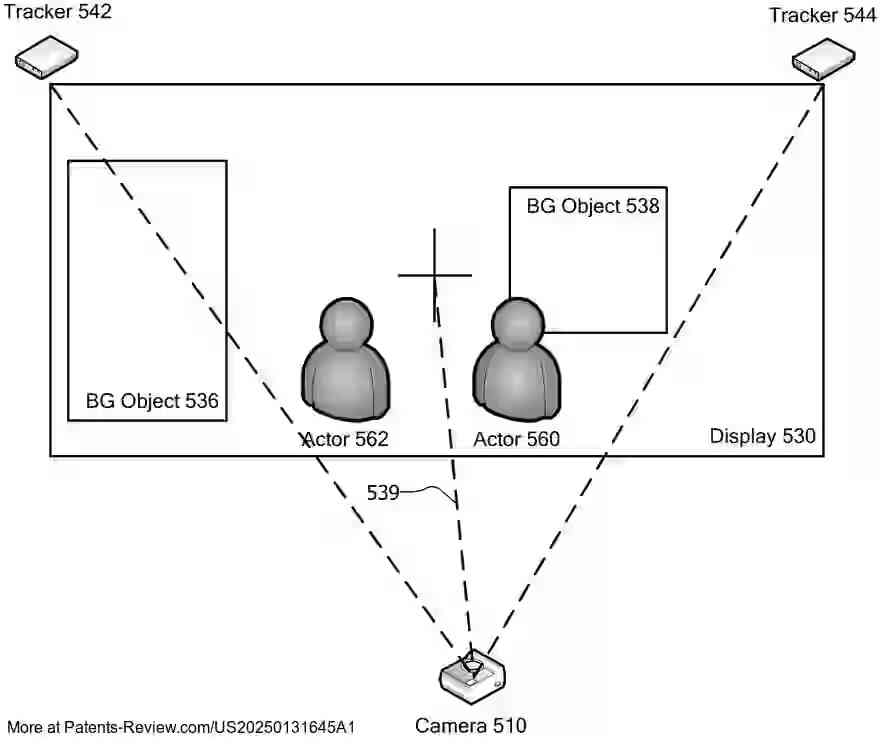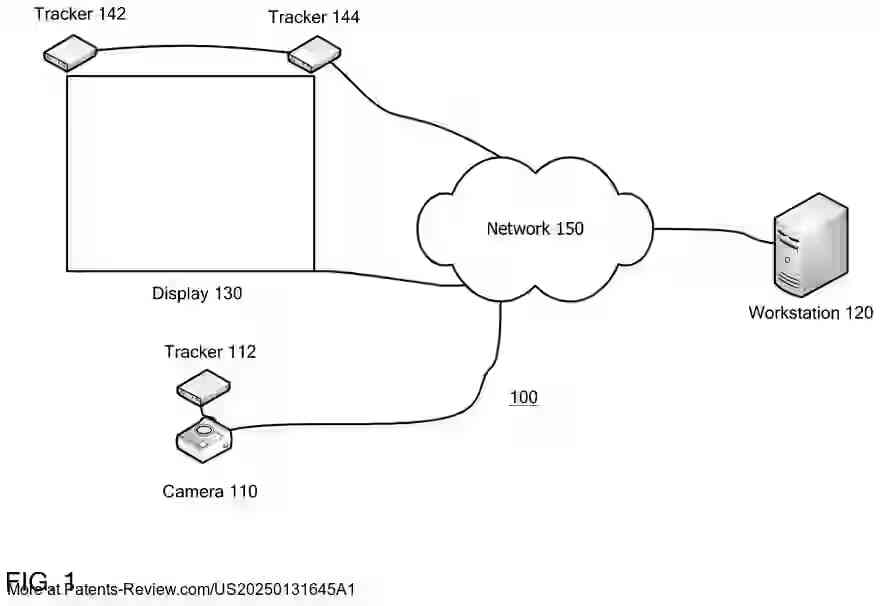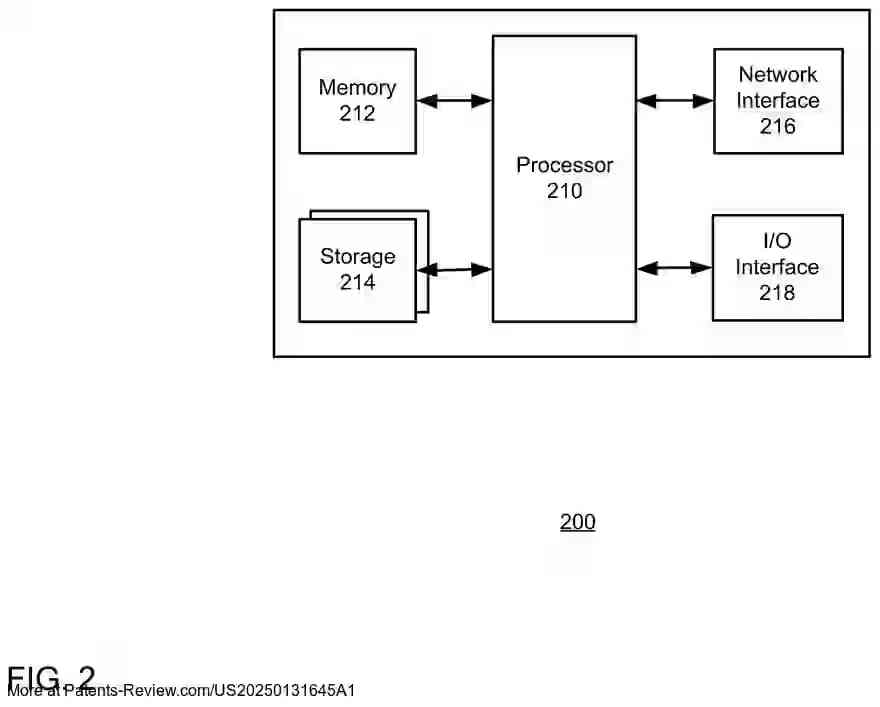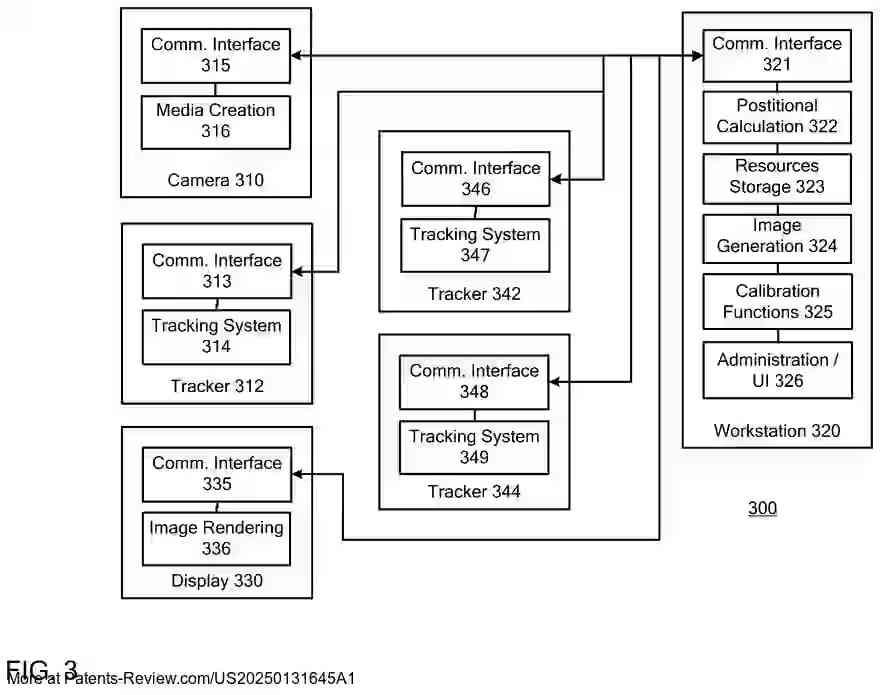AUGMENTED REALITY WALL WITH COMBINED VIEWER AND CAMERA TRACKING
US20250131645
2025-04-24
Physics
G06T15/20
Inventors:
Applicant:
Drawings (4 of 13)




Smart overview of the Invention
Augmented reality (AR) systems are being developed to enhance filmmaking by offering real-time projection of backgrounds with accurate perspective adjustments. This approach aims to replace traditional green screen techniques, where actors perform in front of a single-color backdrop, with dynamic digital scenes that adjust in real-time to camera movements. This allows for more immersive environments and reduces the need for extensive post-production work, thus saving time and costs.
Technical Components
The system comprises a computing device connected to a display and trackers that monitor the location of a camera relative to the display. These trackers ensure that the digital scene presented on the display adapts appropriately to the camera's position, maintaining correct perspective shifts. This setup facilitates real-time interaction between actors and digital elements, which is crucial for achieving seamless integration of live-action and augmented reality components.
Advantages over Traditional Methods
Traditional green screen filming often involves significant post-production work to add digital effects and backgrounds, which can be time-consuming and costly. The new AR system addresses these issues by providing immediate visual feedback during filming, allowing directors to make real-time adjustments. This reduces the likelihood of needing re-shoots and minimizes delays associated with rendering corrections, enhancing overall production efficiency.
Comparison with Other Technologies
While existing AR and virtual reality systems offer immersive experiences from a single user's perspective, this innovation extends those capabilities to multi-viewer scenarios, such as film sets. Unlike interactive screens found in public spaces, which offer limited functionality, this system dynamically alters digital scenes based on both camera and human movements, providing a more comprehensive solution for interactive filmmaking.
Potential Impact
By integrating real-time effects and dynamic scene adjustments, this technology enhances the realism of live-action filming. It allows for immediate application of special effects, such as lighting or object projections, synchronized with an actor's movements within a scene. This capability not only improves the quality of visual storytelling but also opens new possibilities for creative expression in filmmaking and other applications requiring live augmented reality interactions.